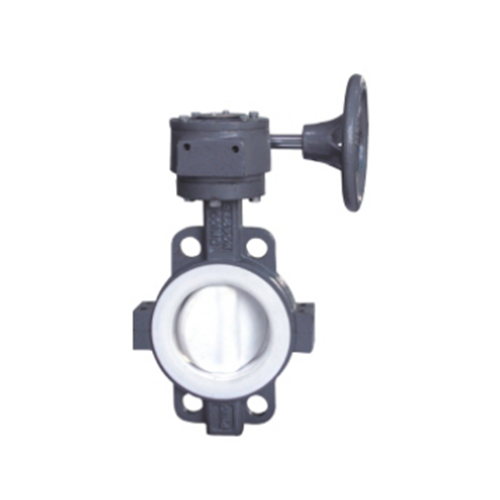
Stop Valve Testing Procedures and Quality Standards
1. Introduction
Stop valves, also known as isolation valves, are critical components in piping systems, used to control the flow of fluids (liquids, gases, or slurries). They are widely employed in industries such as oil and gas, water treatment, chemical processing, and power generation. To ensure reliability, safety, and compliance with industry standards, stop valves must undergo rigorous testing and quality control procedures.
This document outlines the key testing procedures and quality standards applicable to stop valves, covering material inspection, pressure testing, leakage testing, functional testing, and certification requirements.
---
2. Material Inspection and Verification
Before manufacturing begins, the materials used in stop valves must be inspected to ensure they meet specified standards.
2.1 Material Certification
- Verify material certificates (mill test reports) for compliance with ASTM, ASME, EN, or other applicable standards.
- Check chemical composition and mechanical properties (tensile strength, yield strength, hardness).
2.2 Dimensional Inspection
- Confirm valve dimensions (body thickness, flange dimensions, stem diameter) against engineering drawings.
- Use precision measuring tools (calipers, micrometers, CMM machines).
2.3 Non-Destructive Testing (NDT)
- Ultrasonic Testing (UT): Detects internal flaws in cast or forged valve bodies.
- Magnetic Particle Testing (MT): Identifies surface cracks in ferromagnetic materials.
- Dye Penetrant Testing (PT): Detects surface defects in non-ferrous materials.
- Radiographic Testing (RT): Examines weld integrity in pressure-retaining components.
---
3. Pressure Testing Procedures
Pressure testing ensures that stop valves can withstand operating conditions without failure.
3.1 Hydrostatic Shell Test
- Purpose: Verifies the integrity of the valve body and pressure boundary.
- Procedure:
- Fill the valve body with water (or another test fluid).
- Apply pressure to 1.5 times the maximum allowable working pressure (MAWP).
- Hold for a minimum of 10 minutes (as per API 598, ASME B16.34).
- Inspect for leaks, deformation, or pressure drop.
3.2 Seat Leakage Test
- Purpose: Ensures the sealing surfaces prevent leakage when closed.
- Procedure:
- Close the valve and apply test pressure (typically 1.1 times MAWP).
- Measure leakage using a calibrated flow meter or visual inspection.
- Acceptable leakage rates vary by standard (e.g., API 598 allows zero leakage for metal-seated valves).
3.3 High-Pressure Gas Test (Optional for Critical Applications)
- Purpose: Simulates gas service conditions where leakage is unacceptable.
- Procedure:
- Use inert gas (nitrogen or helium) at specified test pressure.
- Apply a soap solution or use a mass spectrometer to detect leaks.
---
4. Functional Testing
Functional tests verify that the valve operates correctly under simulated service conditions.
4.1 Operation Torque Test
- Purpose: Ensures the valve can be operated without excessive force.
- Procedure:
- Use a torque wrench to measure the force required to open/close the valve.
- Compare results with manufacturer specifications.
4.2 Cycling Test (Endurance Test)
- Purpose: Assesses valve durability under repeated operation.
- Procedure:
- Open and close the valve multiple times (e.g., 500 cycles for API 598).
- Inspect for wear, galling, or performance degradation.
4.3 Fire Test (API 607/API 6FA)
- Purpose: Validates valve performance in fire conditions.
- Procedure:
- Expose the valve to a controlled fire (1,400°F for 30 minutes).
- Conduct a post-fire leakage test to ensure sealing integrity.
---
5. Quality Standards and Certifications
Stop valves must comply with international standards to ensure safety and reliability.
5.1 API Standards
- API 598: Valve inspection and testing requirements.
- API 600: Bolted bonnet steel gate valves.
- API 6D: Pipeline valves (ball, check, gate, plug).
5.2 ASME Standards
- ASME B16.34: Pressure ratings and material requirements.
- ASME B16.10: Face-to-face dimensions for valves.
5.3 ISO Standards
- ISO 5208: Industrial valve leakage classifications.
- ISO 10434: Bolted bonnet steel gate valves.
5.4 European Standards (EN)
- EN 12266: Testing of industrial valves.
- EN 1984: Industrial valves – steel gate valves.
5.5 Certification Marks
- CE Marking: Compliance with EU directives.
- PED (Pressure Equipment Directive): Required for valves in EU pressure systems.
- ATEX: Certification for valves in explosive atmospheres.
---
6. Documentation and Traceability
Proper documentation ensures traceability and compliance with regulatory requirements.
6.1 Inspection and Test Records
- Material certificates.
- NDT reports.
- Pressure test records.
- Functional test results.
6.2 Valve Marking and Identification
- Each valve must be permanently marked with:
- Manufacturer’s name or logo (if applicable).
- Pressure rating (e.g., Class 150, PN16).
- Material grade (e.g., ASTM A216 WCB).
- Size and serial number.
---
7. Conclusion
Stop valve testing and quality control are essential to ensure safe and reliable operation in industrial applications. By adhering to standardized testing procedures (hydrostatic, leakage, functional) and complying with international quality standards (API, ASME, ISO), manufacturers can guarantee that valves meet performance and safety requirements.
Proper documentation, material verification, and certification ensure traceability and regulatory compliance, reducing the risk of valve failure in critical systems. Continuous improvement in testing methodologies and adherence to evolving industry standards will further enhance valve reliability and longevity.
(Word count: ~2000)
---
This document provides a comprehensive overview of stop valve testing procedures and quality standards without referencing any specific company. Let me know if you need any modifications or additional details.
Situs web ini menggunakan cookie untuk memastikan Anda mendapatkan pengalaman terbaik di situs web kami.
Komentar
(0)